There’s more to America’s national parks than towering mountains, deep canyons and unforgiving desert. While the more famous parks—Yellowstone, Yosemite, Grand Canyon, Death Valley,…—do protect those wild, rugged landscapes, others are more gentle, subdued and welcoming.
Yes, America also has its fair share of island national parks, places where you can sunbathe and (sea) kayak, snorkel and scuba dive, as well as a few gorgeous national seashores and lakeshores.
Contents
9 USA National Parks for Summer Vacations
This best island national parks for summer vacations post may contain affiliate links. You can read more about our Terms of Use / Disclosure here.
7 Island National Parks to Visit This Summer
In total, there are seven national parks in the USA that lie partially or entirely on islands.
All but two of them lie in a (sub)tropical region, making them without question the best national parks for summer vacations, while also being very enjoyable in winter. The other two, just because of their northerly location, are also best visited in summer.
Acadia National Park, Maine
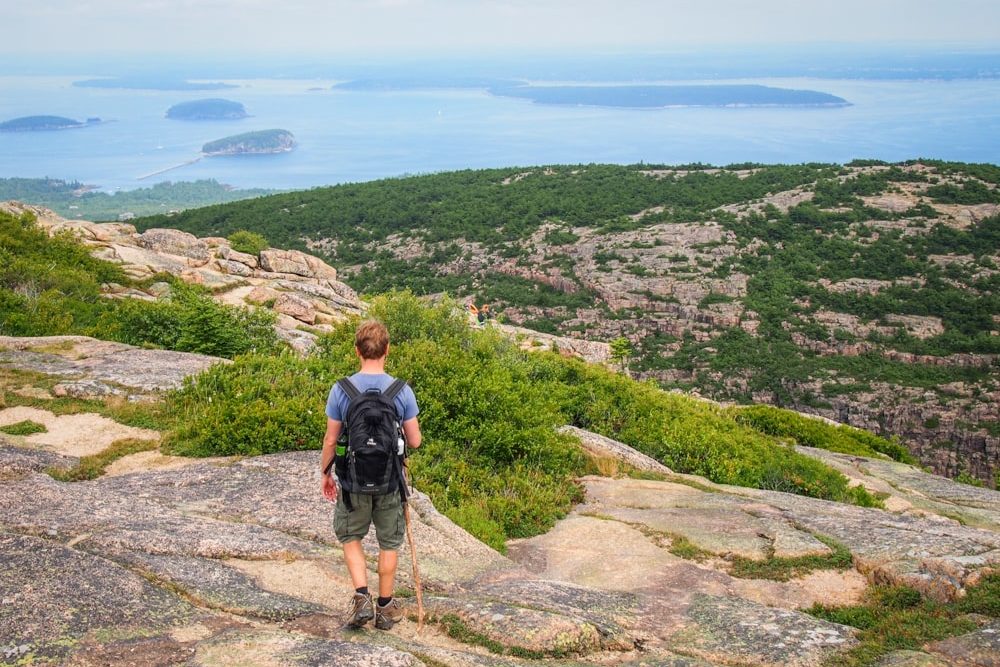
Acadia National Park is the only national park in New England, the northeastern corner of the United States.
Located on a number of islands—Mount Desert Island is the main one—on the stunning coast of Maine, this is a super-popular destination in this part of the country, one of the best island national parks to visit in summer. And there are many reasons for that.
Combining rugged coastlines and mountain ranges, freshwater lakes and beaches, Acadia National Park offers visitors a wide variety of activities and numerous incredible views. The park is the result of the combined efforts of early-19th-century philanthropists such as John D. Rockefeller, Jr. and Charles W. Eliot.
In addition to its natural features, the park is also home to a couple of interesting man-made structures, including many miles of carriage roads and a gorgeous lighthouse.
- Things to do: hiking, driving, cycling, horseback riding, swimming, fishing
- When to visit: summer has the best weather for outdoor activities and beach-going, while fall in New England is famously colorful
- More information: Acadia National Park Travel Guide
Dry Tortugas National Park, Florida
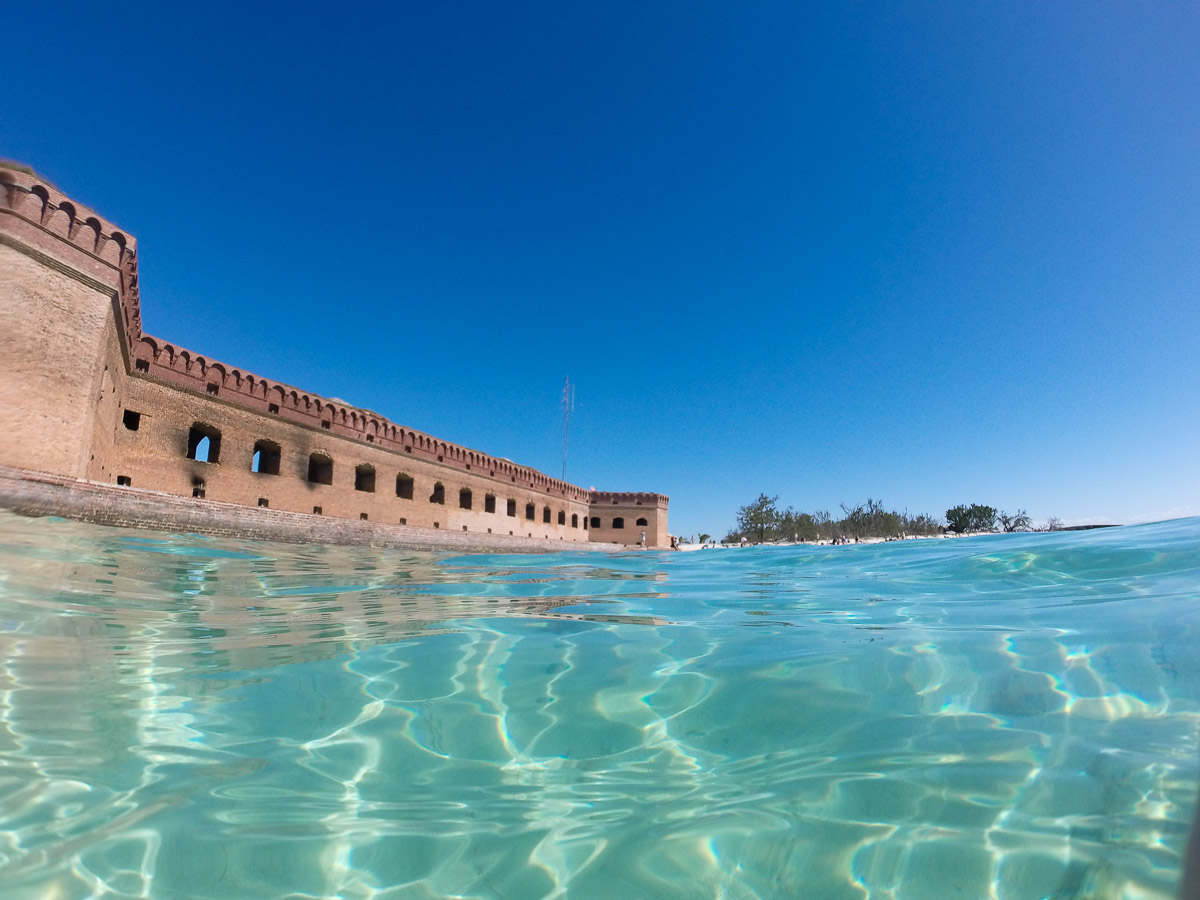
Situated at the far end of the gorgeous Florida Keys, Dry Tortugas National Park encompasses seven small islands nearly 70 miles west of Key West.
It’s one of the most inaccessible national parks in the USA, only reachable by boat or waterplane, while most other parks are reachable by road.
The park is 100 square miles in size, but only about 1% of this is dry land. On that land, you’ll find imposing Fort Jefferson, the largest brick building in the Western Hemisphere and the one main landmark in the park.
The rest of Dry Tortugas boasts phenomenal coral reefs, crystal-clear waters and an abundance of marine life. Needless to say, this is one of the top American national parks for snorkeling and scuba diving.
- Things to do: snorkeling, scuba diving, sea kayaking, boating, wildlife watching
- When to visit: winter is super-comfortable, but both spring and fall are amazing for (migratory) bird watching on the islands; summer is hot but quieter and offers the best underwater visibility for snorkeling and scuba diving
Biscayne National Park, Florida
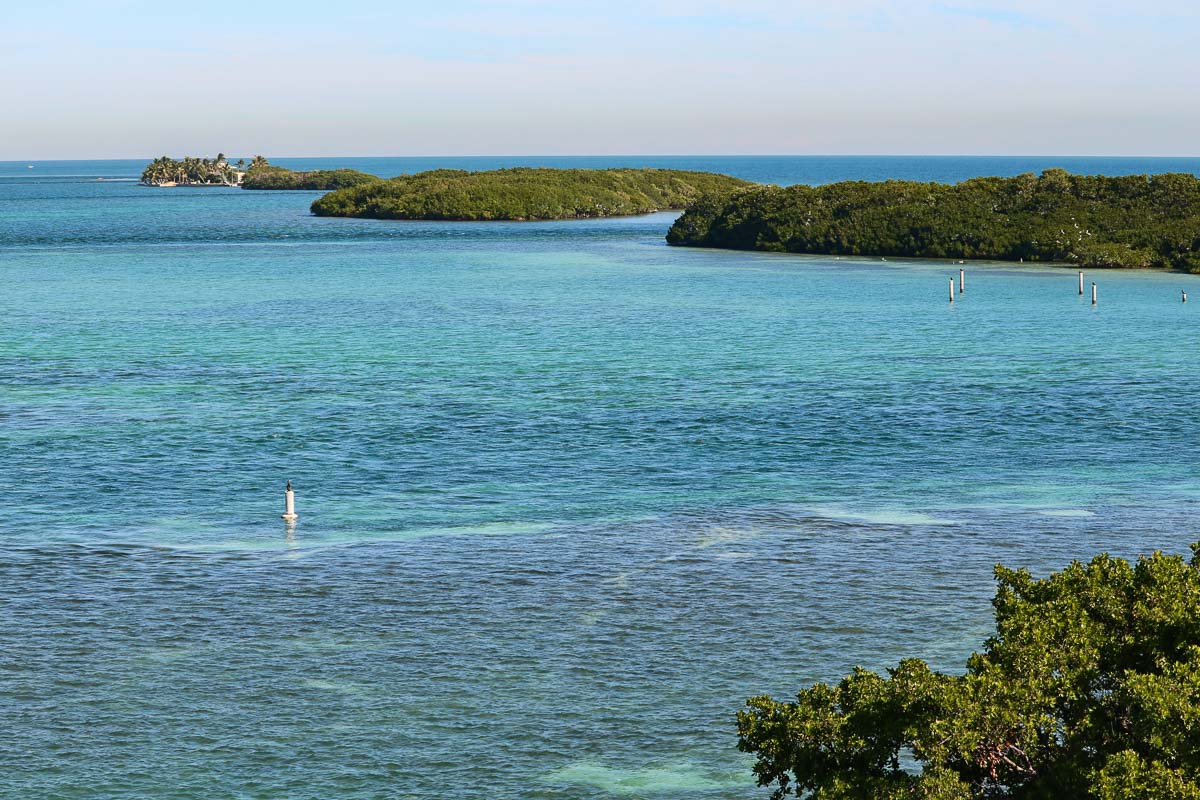
Miami is one of the best gateways towns to national parks in the USA, just because it lies near three fantastic coastal parks.
This includes Biscayne National Park, located within eyesight from downtown Miami. However, even though it lies a stone’s throw from a major city, this park is worlds away.
Protecting Biscayne Bay, it comprises coastal mangrove forests, thriving coral reefs, the crystal-clear waters, and beautiful islands like Elliott Key and Boca Chita Key. One of the most popular things to do in Biscayne National Park is joining guided boat tours across the bay.
Just because of those coral reefs and their huge populations of marine life, this is one of the America’s best national parks for scuba diving. In addition to superb natural beauty, human history is abundant as well, from pirate hideouts to presidential retreats.
- Things to do: canoeing and sea kayaking, fishing, camping, boating, beach-going, snorkeling, scuba diving, wildlife watching
- When to visit: snorkeling and scuba diving is best in summer and fall, while the lack of mosquitos and other nuisance insects makes winter the best camping season
Channel Islands National Park, California
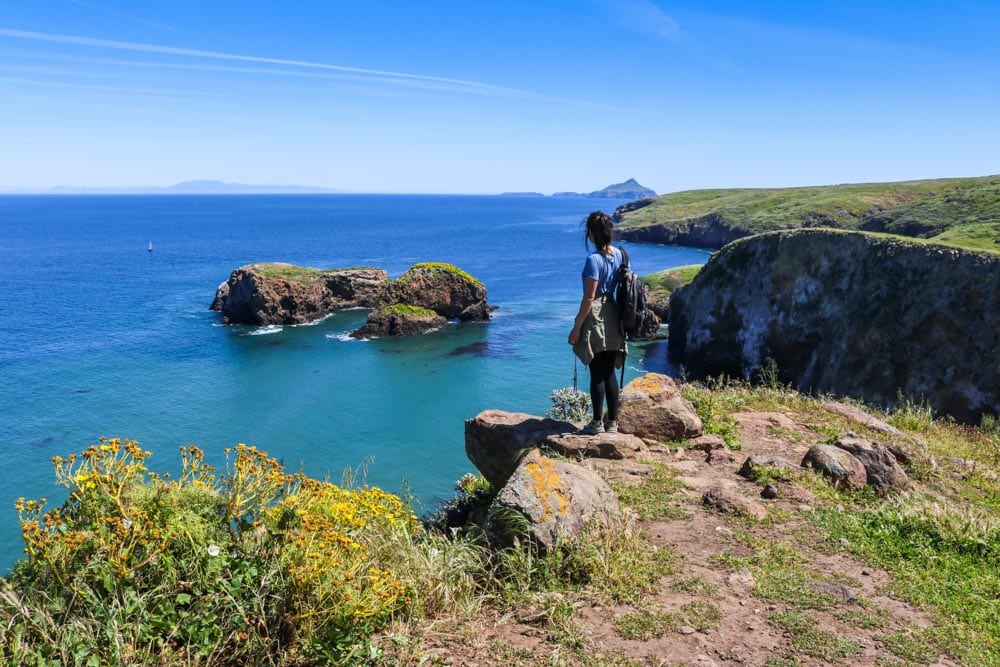
Just off the coast of Southern California, the eight Channel Islands beckon. Located between the mainland and the open Pacific Ocean, they lie in an oceanic region characterized by a remarkably varied topography.
The sea floor around the archipelago consists of sea mounts, underwater plateaus, canyons and vast basins—Santa Cruz Basin, for example, is deeper than the Grand Canyon.
Five of the eight Channel Islands are protected as Channel Islands National Park. Vast kelp forests surround the islands, providing a refuge and habitat for both the tiniest and the absolute largest animals, from plankton to blue whales.
Other high-profile marine animals include seals and sea lions, dolphins, humpback whales and sharks.
On land, too, there’s an amazing variety of life. Much of it is endemic, thanks to the islands’ history of isolation. Many mammals made it across the Santa Barbara Channel, eventually evolving into species unique to the islands.
Home to more than 2,000 different animal species, there’s a good reason that the Channel Islands are sometimes referred to as “North America’s Galapagos”
- Things to do: wildlife watching, scuba diving, snorkeling, sea kayaking, hiking, boating, fishing
- When to visit: superb year-round; spring features wildflowers and summer has the best sea kayaking, sailing and swimming weather, while fall is arguably the best wildlife watching season and winter boasts the most vibrant sunsets
- More information: National Parks of the West Travel Guide
Isle Royale National Park, Michigan
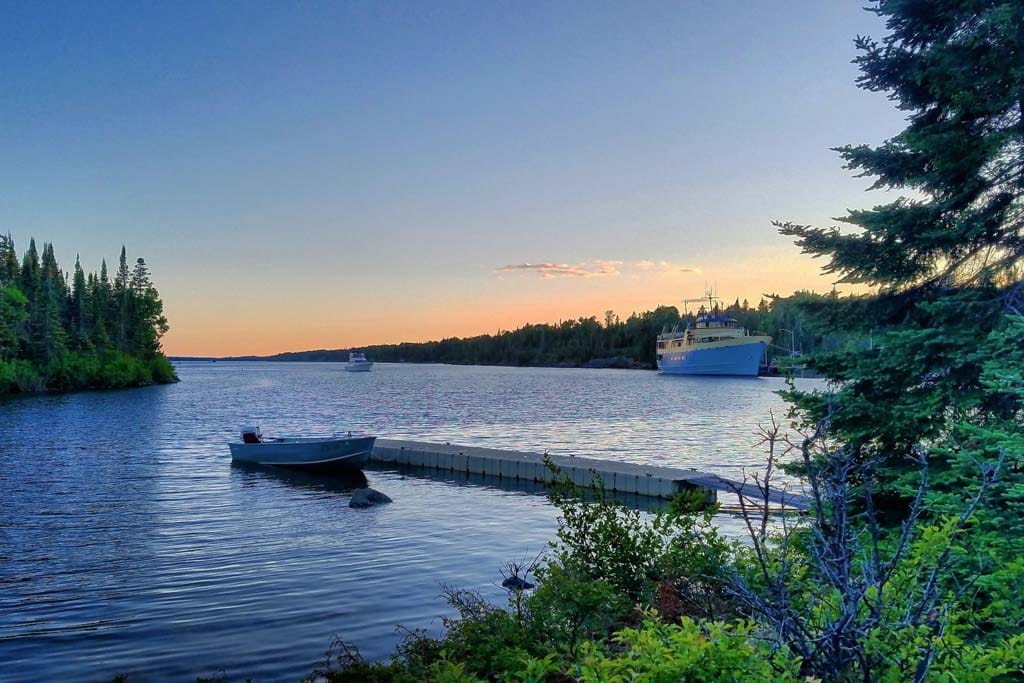
One of the least visited national parks in the lower 48 states, Michigan’s Isle Royale National Park is one of those places where it’s still possible to really get away from it all.
Only accessible by boat and seaplane, this isolated island in Lake Superior is home to wolves and moose. Numerous hiking trails zigzag across the island, while various campgrounds offer wilderness accommodation.
For people who are looking for wild nature and remote adventures, Isle Royale National Park is arguably the best of all American island national parks.
This is absolute bliss for backpackers, campers, hikers and kayakers, but, perhaps surprisingly, scuba diving in the cold surrounding waters makes for a truly unique experience as well.
- Things to do: backpacking and hiking, camping, canoeing, kayaking, fishing, boating, scuba diving
- When to visit: open from mid-April through October, the park is at its “busiest” in August (although no more than 30,000 people visited it in 2017); July and August have the most reliable weather in these parts, while May is the quietest month.
Virgin Islands National Park, U.S. Virgin Islands
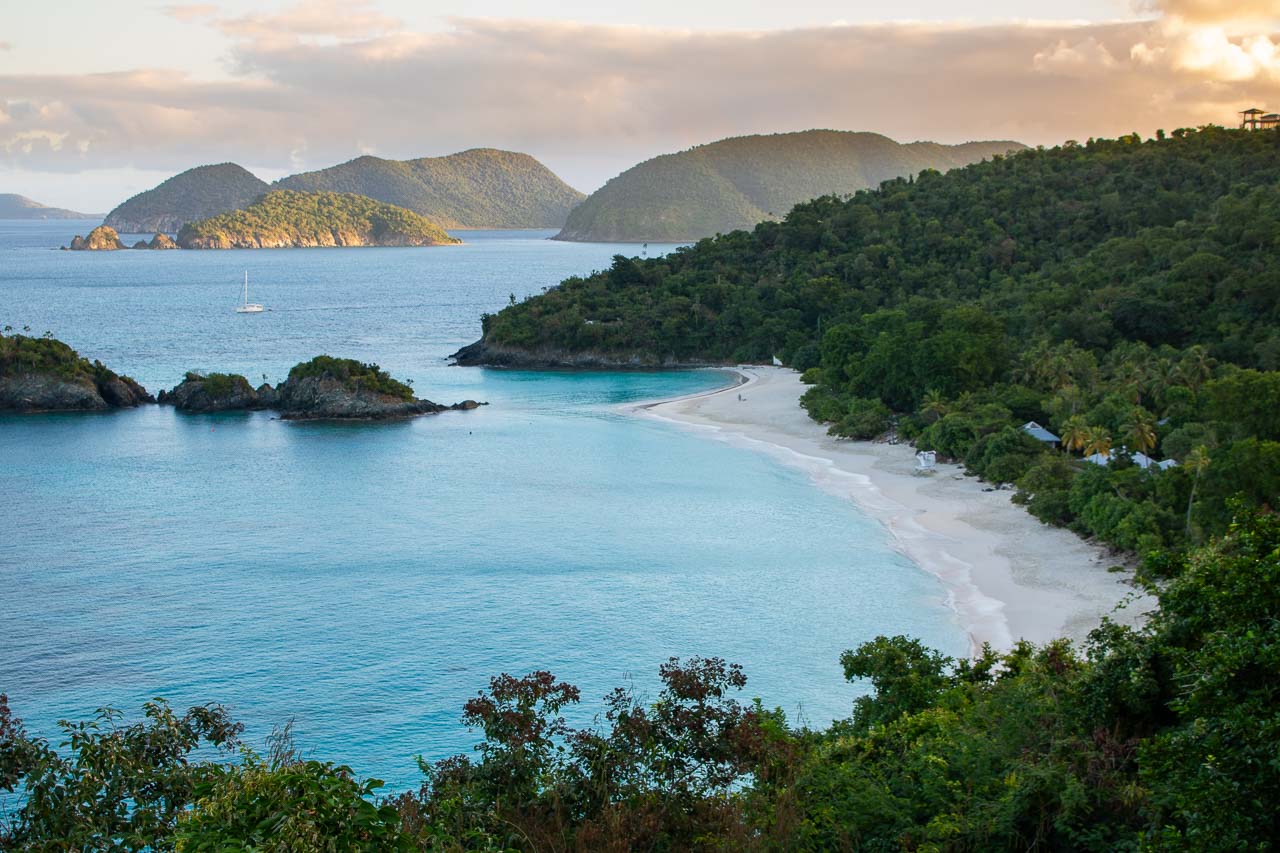
When talking about the best island national parks, it doesn’t really get any better than Virgin Islands National Park. This is one of two national parks that lie overseas, in a U.S. territory, as opposed to in an actual state (the other one is in American Samoa, see below).
Occupying more than half of the island of St. John and almost all of Hassel Island in the U.S. Virgin Islands, this relatively accessible park is renowned for its scuba diving, snorkeling, stunning beaches, beautiful views, historic ruins, and hiking opportunities.
If you’re specifically looking for a park to go sunbathing and swimming, look no further than this one, without question one of the best national parks for beaches.
Remember, though, that about 40% of the park is water. Trails are available both on land and underwater, from hikes to scenic overlooks to dives along the “underwater snorkel trail.”
- Things to do: snorkeling, scuba diving, spending afternoons on the beach, hiking
- When to visit: the weather is inviting throughout the year; December through April is the priciest time to visit, while June through November is hurricane season and much quieter
National Park of American Samoa, American Samoa
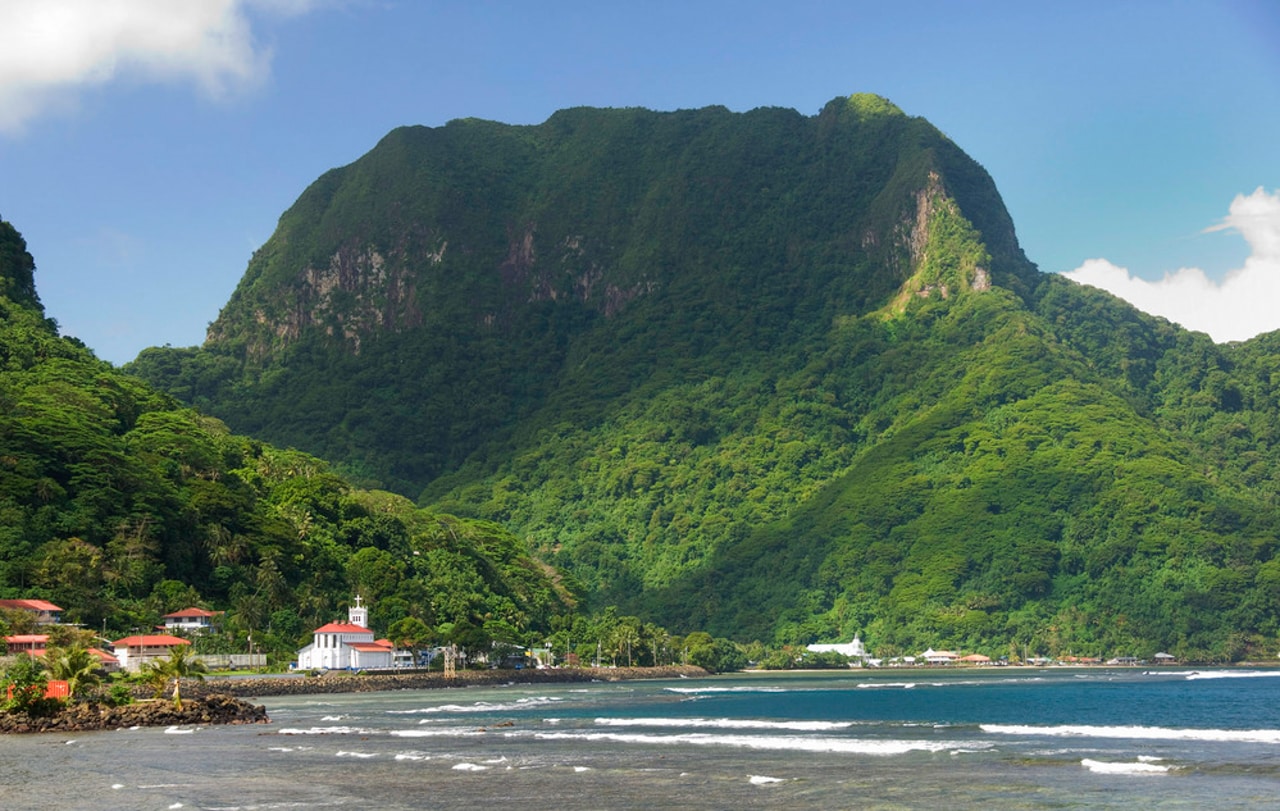
The National Park of American Samoa, situated on three tropical islands in the Pacific Ocean, is one of America’s most extraordinary national parks. It’s the only one south of the equator and by far the remotest of them all.
The park protects sheer volcanic peaks, beaches fringed by coral reefs, unique wildlife and a fascinating millennia-old culture.
It’s exceptional because here, you won’t find the facilities and well-maintained roads you might be used to in the mainland parks.
Samoans are still the custodians of these lands and they manage visitor facilities in traditional villages. This adds yet another aspect to what already is a remarkably unique park.
- Things to do: hiking, snorkeling, scuba diving, sunbathing, immersing yourself in the 3,000-year-old local culture
- When to visit: June to September is the dry season, while October has some fascinating cultural events
1 National Seashore & 1 National Lakeshore – Worthy Alternatives
The American national park system encompasses many more places than just the 59 national parks. There are also national historic sites, national monuments and national seashores and lakeshores.
To offer you even more American island national parks options, I’ve also included one exceptional national seashore and one underrated national lakeshore, both also (partially) located on islands.
Assateague Island National Seashore, Maryland and Virginia
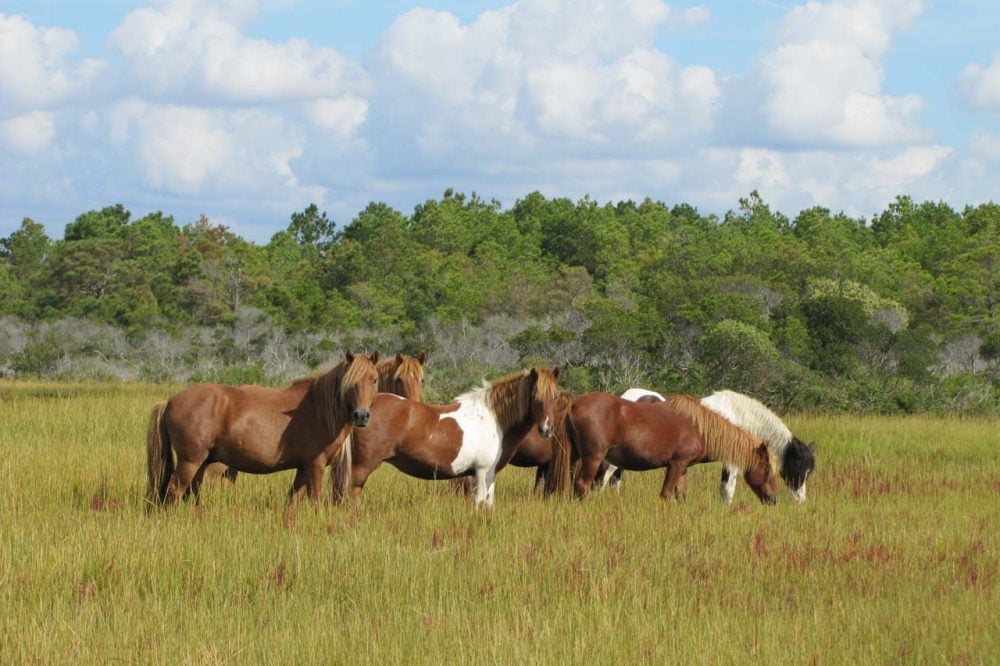
Protecting a part of a 37-mile-long (60 kilometers) barrier island off the Atlantic coast in Maryland and Virginia, Assateague Island National Seashore is one of the most exceptional national parks for summer vacations in this part of the country.
This is the largest, undeveloped natural barrier island in the Mid-Atlantic.
Dominated by sand—beaches and dunes—, this gorgeous coastal area is constantly on the move. Literally. Waves and wind never stop changing the way things look around here.
Other natural features that make this such an attractive place include coastal forests, bays and salt marshes. And let’s not forget the large herd of wild horses that roam the beaches and woods, a major drawcard of this national seashore.
- Things to do: hiking, camping, wildlife watching, swimming, fishing, four-wheel driving
- When to visit: summer is the absolute best time to visit the glorious beaches
Apostle Islands National Lakeshore, Wisconsin
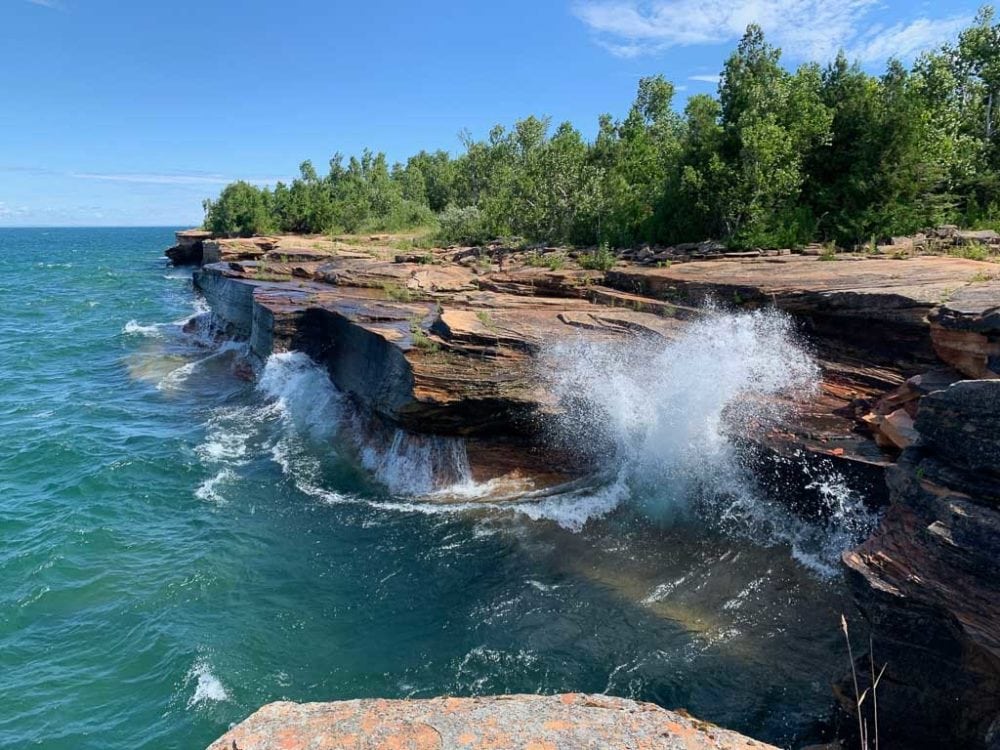
Encompassing 21 of the 22 Apostles Islands along the shore of Lake Superior, Apostle Islands National Lakeshore is a popular summer vacation national park because of its beautiful scenery, sea caves, historic lighthouses and ancient forests.
Similar to above-mentioned Isle Royale National Park, this is a phenomenal place for adventure travelers.
This one is much more accessible, though, a portion of it being located on the Wisconsin mainland. Getting to the islands, however, is a bit trickier, but is possible with your own boat or on commercial ferries and cruises.
- Things to do: wildlife watching, camping, hiking, canoeing, kayaking, fishing, scuba diving, boating,
- When to visit: known for its cold weather, this national lakeshore is best visited in mid-summer for the most comfortable temperatures
Best National Parks by Month
Check out the following blog posts for the best national parks to visit in each specific month:
- January: Best National Parks to Visit in January
- February: Best National Parks to Visit in February
- March: Best National Parks to Visit in March
- December: Best National Parks to Visit in December
This is a brand new series I’ve started, so the list will be expanded as I publish new blog posts for each month.
Other Best National Parks… Posts
- Best USA National Parks for Waterfalls
- Best USA National Parks to Visit in Spring
- Greatest Scenic Drives in National Parks
- Best USA National Parks for Wildlife Watching
- Best USA National Parks for Bird Watching
- Best USA National Parks for Wildflower Watching
- All Volcanic National Parks in America
- Most Photogenic Buildings in National Parks
- Top National Parks for Outdoor Adventures Without the Crowds
- Best USA National Parks for Snowshoeing
- Best USA National Parks for Road Cycling
- Best USA National Parks for Stargazing
- Greatest Urban National Parks in the USA
- Best USA National Parks for Autumn Colors
- Best National Parks for Winter Wonderlands

Canada Airlines
Saturday 7th of December 2019
Very nice post, this article is very informative for travel lovers.
Joanne @ Travel Visa UK
Thursday 17th of May 2018
I love this article, thanks for providing such great information in one place!
Bram Reusen
Thursday 17th of May 2018
Glad you liked it, Joanne!
Lydia
Saturday 12th of May 2018
Summer is an indeed an ideal time of the year to explore national parks, Bram. These are some excellent suggestions. I would love to explore the Dry Tortugas National Park soon. Is a day trip there enough to see the park?
Bram Reusen
Sunday 13th of May 2018
Hey Lydia, yes a day trip would be enough to get a good feel for this remote park. Do some snorkeling and swimming and see Fort Jefferson. If you have more time, I always recommend spending a night camping, of course!